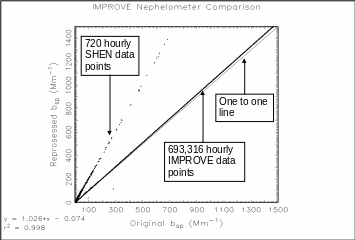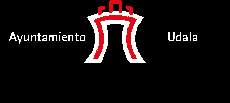REEVALUATION OF HFC 134A (SUVA) SPAN GAS MULTIPLIER AIR
41 ON ERNST JÜNGER’S ‘TOTAL MOBILIZATION’ A REEVALUATION INAPPEAL AGAINST REEVALUATION RESULT THIS FORM MUST BE SUBMITTED
FEDERAL AVIATION ADMINISTRATION WRITTEN REEVALUATION ADOPTION OF ENVIRONMENTAL IMPACT
INSTRUCTIONS FOR COMPLETING THE LONG TERM CARE REEVALUATION (WPA1)
KATIE WEYRAUCH PESTICIDE REEVALUATION DIVISION OFFICE OF PESTICIDE PROGRAMS
REEVALUATION NOT NEEDED AGREEMENT FORM USD DATE
It is important to remember that the calibration of the nephelelometer depends entirely on the published scattering coefficien
Reevaluation of HFC 134a (SUVA) Span Gas Multiplier
Air Resource Specialists, Inc., July 2005
Summary
In August, 2004, Air Resource Specialists (ARS) reevaluated the scattering properties of the SUVA span gas used in processing Optec NGN-2 nephelometer data. SUVA calibrations were compared with calibrations using several gases with well known scattering coefficients. As a result, ARS changed the Rayleigh multiplier it uses for SUVA to 7.25 from the value 7.1 which has been in use since 1993. This new multiplier effectively increases the NGN-2 scattering coefficient by approximately 2.5%. All historical nephelometer data has been reprocessed to include this change.
New SUVA Multiplier
The Optec NGN-2 integrating nephelometer is used to measure the scattering coefficient of a continuously sampled known volume of ambient air. The nephelometer is calibrated with clean (particle free) air and a gas with known scattering properties. Periodic clean air and span gas calibrations are performed in order to monitor and correct for instrument gain and zero intercept drift due to temperature changes and/or dirt accumulating on the measurement walls and chamber optics.
ARS generally performs routine nephelometer calibrations with HFC 134a, also known by the DuPont trade name, SUVA, which has the advantage of a high light scattering coefficient while being inexpensive, is widely available, and causes negligible environmental effects. The calibration of the nephelometer depends entirely on the published SUVA scattering coefficient, expressed as a multiple of Rayleigh (clean air) scattering, which has been reported in the range 7.1 to 7.3. Based on early tests, ARS has historically used a value of 7.1.
In August, 2004, ARS reevaluated the scattering coefficient of SUVA, by relating measurements of SUVA scattering to reproducible standards. Zero air, carbon dioxide, Freon 12 and Freon 22 provided these reference standards. A new NGN-2 nephelometer, which had never been deployed in the field, was used to measure the scattering of the reference standards and SUVA gas. The Rayleigh scattering coefficient multipliers for the span gases are listed in Table 1. The raw nephelometer count was shown to be extremely linear when plotted with the known scattering coefficients as shown in Figure 1. Using the linear relationship in Figure 1, the nephelometer counts for SUVA were related to a multiple of Rayleigh. This test was performed three times, and the following calculated multiples of Rayleigh scattering for SUVA were recorded:
7.24 ± .05 (r2 = 0.99986)
7.20 ± .10 (r2 = 0.99951)
7.26 ± .04 (r2 = 0.99991)
A value of 7.25 was chosen as an approximation of these three multipoint calibrations. This value replaces the multiplier of 7.1 that had previously been used by ARS.
Table 1
Theoretical Multiple of Rayleigh Scattering
|
Span Gas |
Multiplier |
|
Freon 12 (F12) |
15.31 |
|
Freon 22 (F22) |
7.69 |
|
Carbon Dioxide (CO2) |
2.61 |
|
Rayleigh (Zero) |
1.00 |

Figure 1. Linear relationship between NGN-2 counts and theoretical multiple of Rayleigh scattering for zero air, CO2, Freon 22 (F22) and Freon 12 (F12).
Reprocessed Nephelometer Data
ARS reprocessed all historical Optec NGN-2 nephelometer data with a SUVA multiplier of 7.25. The new multiplier is expected to increase the measured scattering values by approximately 2.5%. This change is approximate because reported scattering values are rounded to the nearest inverse Megameter (Mm-1), so the percent change to small values may be significantly different. In the IMPROVE nephelometer database, approximately 99.9% of the data exhibited this expected change based on the introduction of a higher SUVA multiplier.
Reprocessing the nephelometer data introduced other changes, however, independent of the change in the SUVA multiplier. The first change is related to quarterly validation of calibration data. ARS utilizes an automatic screening program to help determine which calibrations are invalid. This screening program reviews calibration data in analysis windows that often cross quarterly boundaries. Occasionally, calibration or instrument diagnostic information received after data have been reported will affect the results of the screening program and when data is reprocessed at a later time minor changes are observed. In the IMPROVE nephelometer database, 31 out of nearly 700,000 hours (0.004%) were affected in this way.
Other isolated changes were found not related to the end of quarter anomaly described above. These changes were the result of a minor change made to calibration information after the data were originally reported. Typically the exact source of these changes could not be identified. In the IMPROVE nephelometer database only the Shenandoah site exhibited this problem, resulting in 720 out of nearly 700,000 hours (0.1%) affected. All of the Shenandoah data collected during December 1998 changed due to a post-processing change in calibration information.
Figure 2 presents comparison results for the IMPROVE nephelometer database in the form of a scatter plot between newly reprocessed data and original data. The majority of the data points fall just above the one-to-one line as expected. The December 1998 Shenandoah outlier data set is identified, and while it appears significant on the plot, it represents only 0.1% of the total database. These results were typical for other nephelometer networks.

Figure 2. Summary comparison between originally reported IMPROVE nephelometer data (1993 – 2004) and nephelometer data reprocessed with a SUVA multiplier of 7.25. Note that the majority of the data fall on a line indicating a positive increase of approximately 2.5%. The December 1998 Shenandoah outlier data set described in the text is also indicated.
REEVALUATION OF HFC 134A (SUVA) SPAN GAS MULTIPLIER AIR
SCIENTIFIC OPINION ON THE REEVALUATION OF INDIGO CARMINE (E
Tags: (suva) span, (suva), reevaluation, multiplier
- CONSEJO REGIONAL DE ENFERMERÍA MERCOSUR ( C R E
- TEMA 10 POLÍGONOS Y CIRCUNFERENCIAS 1 POLÍGONOS POLÍGONO
- TEMA 13 EL ESTADO CIVIL NATURALEZA Y CARACTERES CAPACIDAD
- FORMATO DE REPORTE DE CALIFICACIÓN TIJUANA BAJA CALIFORNIA A
- DZIEŃ ZIEMI 2021 22 KWIETNIA NA CAŁYM ŚWIECIE OBCHODZONY
- 0 S GPROPUESTA 121 31 DE MARZO
- TEMA I LOS CUIDADOS DE ENFERMERÍA COMO MATERIA HISTÓRICA
- SAJÁT VAGYONKEZELÉS A DUNAIPOLY NEMZETI PARK IGAZGATÓSÁG VAGYONKEZELÉSÉBEN LÉVŐ
- GRADE SHEET FALL SPRING [YEAR] [YOUR NAME] UNIVERSITY OF
- REGULAMIN PRZETARGU PISEMNEGO NR GCR12W2011 NA SPRZEDAŻ URZĄDZEŃ ENERGETYCZNYCH
- PORTAFOLIO DE SERVICIO “HUMANIZACIÓN CON SENSIBILIDAD SOCIAL” GERENTE JAVIER
- 5 COMO SE ENFOCA EL LENGUAJE Y LA COMUNICACION
- 6 (6) EMBARGO 1952010 KLO 1430! ARVOISAT SEMINAARIN OSALLISTUJAT
- TEMARIO PROPUESTO PARA EXAMEN DE APTITUD PARA EL PUESTO
- KARTA INFORMACYJNA WYPEŁNIAJĄ RODZICE I LEKARZ TURNUS REHABILITACYJNY USPRAWNIAJĄCOREKREACYJNY
- SELFOSCILLATION CONDITIONS OF A RESONANTNANOELECTROMECHANICAL MASS SENSOR ERIC COLINET+
- CONTRATO DE ARRENDAMIENTO DE LOCAL CON OPCION DE COMPRA
- BANKING STRUCTURE IN INDIA LOOKING AHEAD BY LOOKING BACK1
- APPLICATION FOR STATELEVEL TRAINING THE GOVERNMENT AND PROFESSIONAL RELATIONS
- 2 S GPROPUESTA 162 31DE MARZO DE
- OCIO ACTIVO MARZO 2017 MES DE LA
- TEMA 40 CONTRATOS BANCARIOS CONCEPTO Y CLASES LA RELACION
- 3 ARATÓ LÁSZLÓ BEVEZETŐJE GENDER ÉS HAGYOMÁNY – NŐI
- HUMBER NATURE FORUM 930 PM WEDNESDAY 18 MARCH 2015
- X JORNADAS AEQUITAS “DERECHO Y SITUACIONES DE DISCAPACIDAD” BILBAO
- AXALTA COATING SYSTEMS PANAMERICANA COLECTORA ESTE KM 4753 ESCOBAR
- TEMA 1 ELEMENTOS QUÍMICOS DE LA MATERIA VIVA PRINCIPIOS
- MODELO DE REGLAMENTO DE REGIMEN INTERNO DE UNA ASOCIACION
- COMITÉ CANTONAL DE DEPORTES Y RECREACION DE BELEN SESION
- SILABUS NAZIV STUDIJA TALIJANISTIKA IME NASTAVNIKA IVICA PEŠA MATRACKI
ALLA DATA ODIERNA 17072009 SI TRASCRIVONO DI SEGUITO
CAMPEONATO PROVINCIAL JUNIOR GRUPO 1 GRUPO 2 ALVARO HOLGUERAS
 GAIN REPORT PL4025 PAGE 9 OF 9 USDA
GAIN REPORT PL4025 PAGE 9 OF 9 USDA HONORS DISCRETE 71 – 73 REVIEW WORKSHEET NOTES AND
HONORS DISCRETE 71 – 73 REVIEW WORKSHEET NOTES AND YOUTH SERVICES GPO BOX 158 CANBERRA ACT 2601 E
YOUTH SERVICES GPO BOX 158 CANBERRA ACT 2601 ECOMMUNICATION ARTSLITERATURE EDUCATION ST OLAF COLLEGE EDUCATION DEPARTMENT PROFESSIONAL
413 ACUERDO V1262015 MÉXICO DISTRITO FEDERAL
 DECRETO Nº (RA073803) ACUERDO EL EXCMO AYUNTAMIENTO PLENO
DECRETO Nº (RA073803) ACUERDO EL EXCMO AYUNTAMIENTO PLENO F GENERAL RISK ASSESSMENT ALKIRK COUNCIL CORPORATE & NEIGHBOURHOOD
F GENERAL RISK ASSESSMENT ALKIRK COUNCIL CORPORATE & NEIGHBOURHOODFILED 8414 CERTIFIED FOR PUBLICATION IN THE COURT OF
O S N O V N A Š O
 INDIKATOR KINERJA UTAMA PEMERINTAH PROVINSI KEPULAUAN BANGKA BELITUNG TAHUN
INDIKATOR KINERJA UTAMA PEMERINTAH PROVINSI KEPULAUAN BANGKA BELITUNG TAHUNJUSTICIA Y JURISPRUDENCIA CONSTITUCIONAL CURSO 2012 PROF D ANDER
 57 CENTRALNE UROCZYSTOŚCI DNI OLIMPIJCZYKA SUWAŁKI 2021 REGULAMIN „MIĘDZYNARODOWEGO
57 CENTRALNE UROCZYSTOŚCI DNI OLIMPIJCZYKA SUWAŁKI 2021 REGULAMIN „MIĘDZYNARODOWEGOPROJET ÉDUCATIF DE LINSTITUT DES FRÈRES DE LA SAINTEFAMILLE
 INNOVATIVE PROJECT CONCEPT NOTE VILLAGE WATER SAFETY AND SECURITY
INNOVATIVE PROJECT CONCEPT NOTE VILLAGE WATER SAFETY AND SECURITY FELLES MILJØDOKUMENT DATO301102 ARKIV AMD510 UTGAVE 104 UTARBEIDET AV
FELLES MILJØDOKUMENT DATO301102 ARKIV AMD510 UTGAVE 104 UTARBEIDET AVUNIVERSITY OF SULAYMANY OSCE EXAM FOR SIXTH STAGE
CAPÍTULO VI HEILSGESCHICHTE PARTE DEL MUNDO TEOLÓGICO
 INDUSTRIAL FLASK INC 8595865500 BEARDSLEYPIPER & ROBERTS SINTO COMPONENTS
INDUSTRIAL FLASK INC 8595865500 BEARDSLEYPIPER & ROBERTS SINTO COMPONENTS